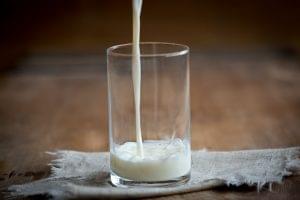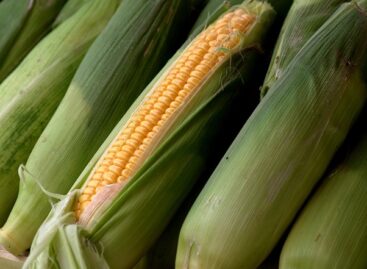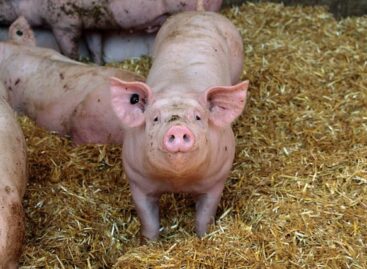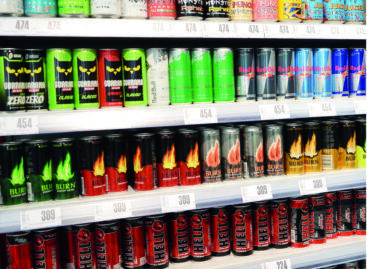Information for small producers: How can the risk of mycotoxin contamination in milk and milk products be reduced?
The weather typical of 2022, the prolongation of the hot, dry summer period, not only resulted in a deterioration of the average corn yield, but also increased the risk of the appearance of fungal toxins produced by molds in feed, including food. Our information provides help for small producers to minimize the risk.

(Photo: Pixabay)
The aflatoxin contamination of the harvested corn is a particular danger, which, in addition to plant growers, also puts feed producers and livestock keepers, especially dairy farms, in a difficult situation.
What is aflatoxin?
Aflatoxin is a highly toxic fungal toxin produced by certain Aspergillus species. It is important to know that both the human and animal bodies can dispose of most mycotoxins in small quantities, but they can cause severe liver damage and cancer if consumed over a certain amount for a long time. In the European Union, mycotoxins, including aflatoxin, have been established as a low level of contamination in feed and food, which certainly does not pose a risk.
Of course, the principle that the products produced are always safe for consumers applies in all areas of the milk production sector. This also applies to small producers, who – as responsible food entrepreneurs – must also take the necessary steps to prevent aflatoxin contamination of their traditional, high-quality products.
What should the small producer pay attention to?
• Efforts must be made to ensure appropriate quality, undamaged fodder for dairy animals.
• Possible domestic sources of aflatoxin contamination are grain corn, by-products of corn processing (CGF, DDGS), feed mixtures made from these and, to a lesser extent, bulk feed (corn silage). Storing non-dried corn with a high water content creates an opportunity for molds to multiply and produce toxins. For this reason, it is always recommended to dry the corn.
• Damaged, broken, discolored kernels or visibly moldy lumps in grain corn pose a great risk, they must be removed by sieving and inspection.
• When using bulk feed, do not give the animals discolored, moldy, or foreign-smelling feed!
• If the amount of aflatoxin in the milk is above the limit value, the first thing to do is to immediately replace the feed (especially grain corn and its by-products) with tested feed containing toxins below the limit value.
• To reduce mycotoxin contamination in feed, so-called also toxin binders, which products are available in the range of many additive distributors. Their use – depending on the aflatoxin content of the feed – can significantly reduce the contamination of milk, but it is not a solution by itself!
Aflatoxin contamination is not noticeable in fresh and processed milk, there are no signs of it. The suitability of milk for consumption and processing can only be verified with a quick test or a laboratory test. When the risk of the appearance of fungal toxins increases due to the weather, it is advisable that even small producers regularly use at least the rapid test. Self-checking creates the opportunity for the small producer to maintain the customers’ trust in his products and to avoid the loss resulting from the disposal of aflatoxin-contaminated milk.
Nébih
Related news
GOSZ-VSZT-NAK variety trial: objective data helps corn producers choose varieties for the nineteenth time
🎧 Hallgasd a cikket: Lejátszás Szünet Folytatás Leállítás Nyelv: Auto…
Read more >Bird flu has also appeared in Nógrád County
🎧 Hallgasd a cikket: Lejátszás Szünet Folytatás Leállítás Nyelv: Auto…
Read more >Nébih orders epidemiological quarantine on three pig farms in Somogy
🎧 Hallgasd a cikket: Lejátszás Szünet Folytatás Leállítás Nyelv: Auto…
Read more >Related news
This is how we’ll shop in 2026 – five food trends that will rewrite shopping
🎧 Hallgasd a cikket: Lejátszás Szünet Folytatás Leállítás Nyelv: Auto…
Read more >Labeling rules for energy drinks have become stricter: they can only be marketed with clear labels
🎧 Hallgasd a cikket: Lejátszás Szünet Folytatás Leállítás Nyelv: Auto…
Read more >Trade union: the elimination of the margin cap could lead to another price explosion for basic foodstuffs
🎧 Hallgasd a cikket: Lejátszás Szünet Folytatás Leállítás Nyelv: Auto…
Read more >







